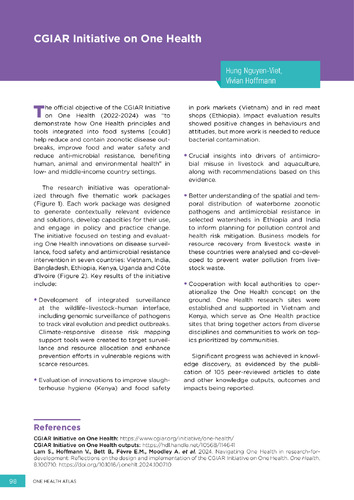
Book Chapter
CGIAR Initiative on One Health
2025Hung Nguyen-Viet; Hoffmann, Vivian
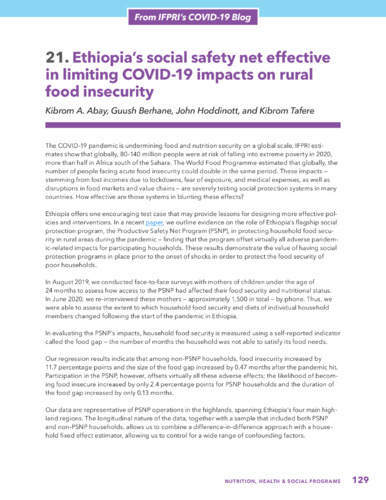
Book Chapter
Ethiopia’s social safety net effective in limiting COVID-19 impacts on rural food insecurity
2022Abay, Kibrom A.; Berhane, Guush; Hoddinott, John F.; Tafere, Kibrom
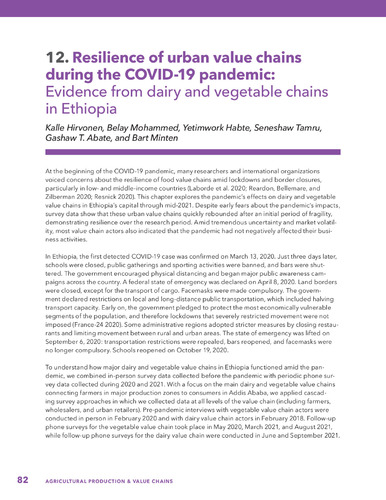
Book Chapter
Resilience of urban value chains during the COVID-19 pandemic: Evidence from dairy and vegetable chains in Ethiopia
2022Hirvonen, Kalle; Mohammed, Belay; Habte, Yetimwork; Tamru, Seneshaw; Abate, Gashaw T.; Minten, Bart
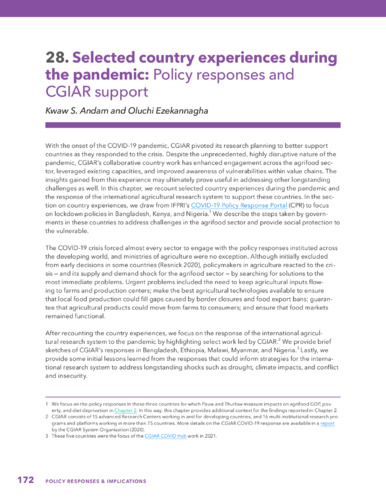
Book Chapter
Selected country experiences during the pandemic: Policy responses and CGIAR support
2022Andam, Kwaw S.; Ezekannagha, Oluchi
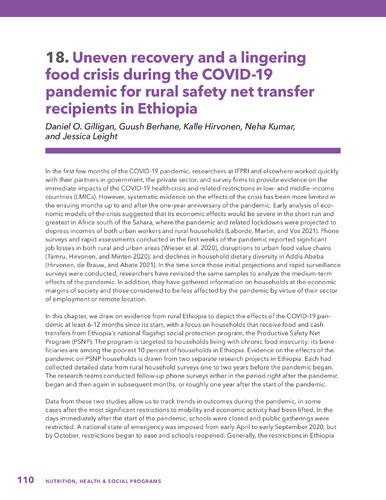
Book Chapter
Uneven recovery and a lingering food crisis during the COVID-19 pandemic for rural safety net transfer recipients in Ethiopia
2022Gilligan, Daniel O.; Berhane, Guush; Hirvonen, Kalle; Kumar, Neha; Leight, Jessica
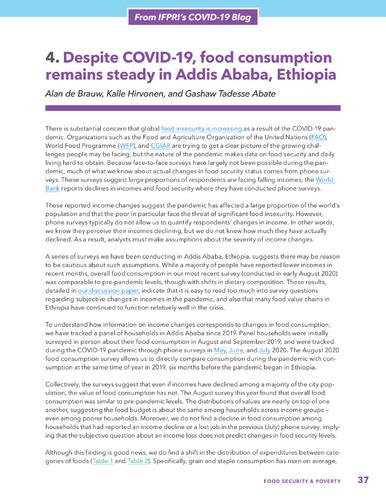
Book Chapter
Despite COVID-19, food consumption remains steady in Addis Ababa, Ethiopia
2022de Brauw, Alan; Hirvonen, Kalle; Abate, Gashaw T.

Book Chapter
An evolving paradigm for Africa and synthesis of the lessons from Asia
2020Diao, Xinshen; Silver, Jed; Takeshima, Hiroyuki; Zhang, Xiaobo

Book Chapter
The rapid-but from a low base-uptake of agricultural mechanization in Ethiopia: Patterns, implications, and challenges
2020Berhane, Guush; Dereje, Mekdim; Minten, Bart; Tamru, Seneshaw
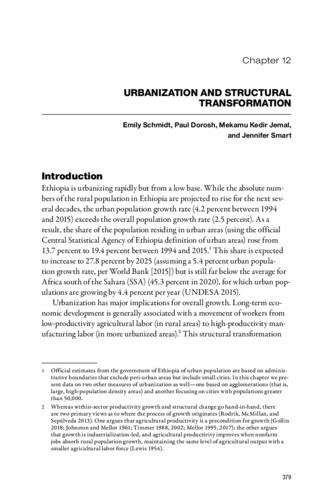
Book Chapter
Urbanization and structural transformation
2020Schmidt, Emily; Dorosh, Paul A.; Kedir Jemal, Mekamu; Smart, Jenny
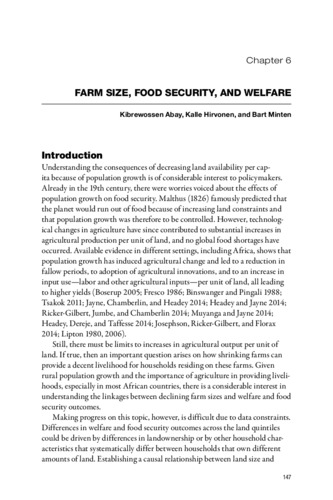
Book Chapter
Farm size, food security, and welfare
2020Abay, Kibrewossen; Hirvonen, Kalle; Minten, Bart

Book Chapter
Evolving food value chains
2020Minten, Bart; Dereje, Mekdim; Bachewe, Fantu Nisrane; Tamru, Seneshaw
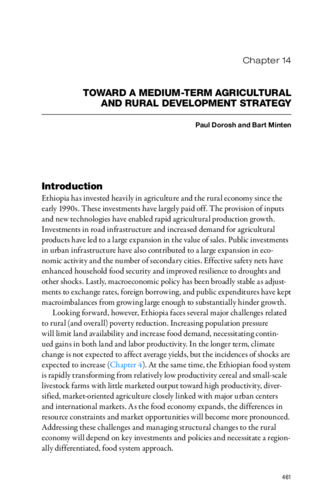
Book Chapter
Toward a medium-term agricultural and rural development strategy
2020Dorosh, Paul A.; Minten, Bart
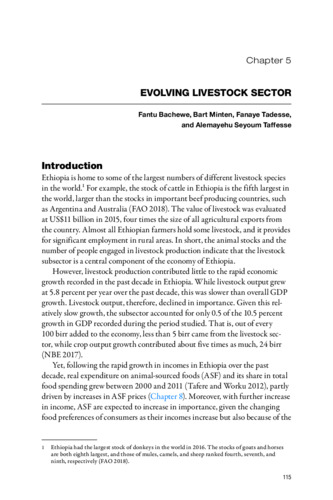
Book Chapter
Evolving livestock sector
2020Bachewe, Fantu Nisrane; Minten, Bart; Tadesse, Fanaye; Taffesse, Alemayehu Seyoum

Book Chapter
Droughts, cereal prices, and price stabilization options
2020Dorosh, Paul A.; Smart, Jenny; Minten, Bart; Stifel, David
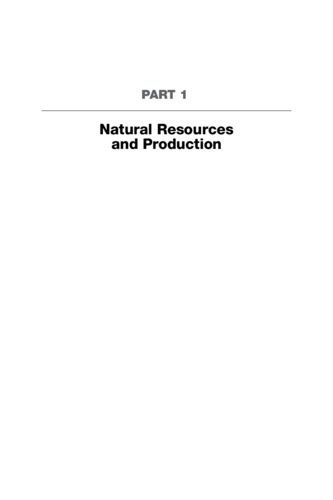
Book Chapter
Cropland expansion
2020Schmidt, Emily; Thomas, Timothy S.

Book Chapter
Food security
2020Stifel, David; Hassen, Ibrahim Worku
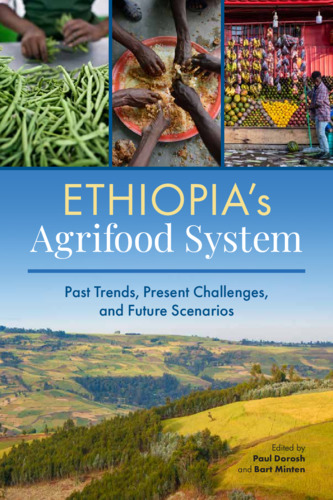
Book
Ethiopia's agrifood system: Past trends, present challenges, and future scenarios
2020Dorosh, Paul A.; Minten, Bart
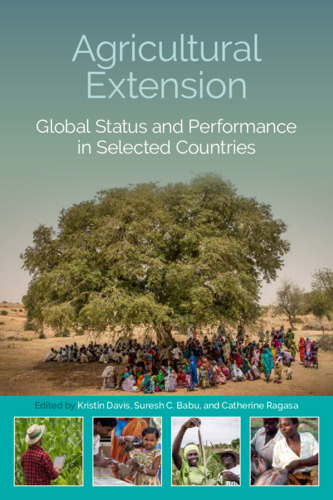
Book
Agricultural extension: Global status and performance in selected countries
2020Davis, Kristin E.; Babu, Suresh Chandra; Ragasa, Catherine
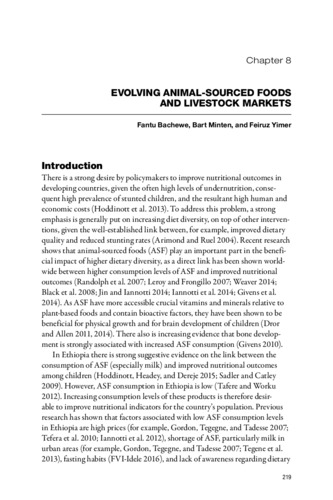
Book Chapter
Evolving animal-sourced foods and livestock markets
2020Bachewe, Fantu Nisrane; Minten, Bart; Yimer, Feiruz

Book Chapter
Nonfarm income and rural labor markets
2020Bachewe, Fantu Nisrane; Berhane, Guush; Minten, Bart; Taffesse, Alemayehu Seyoum
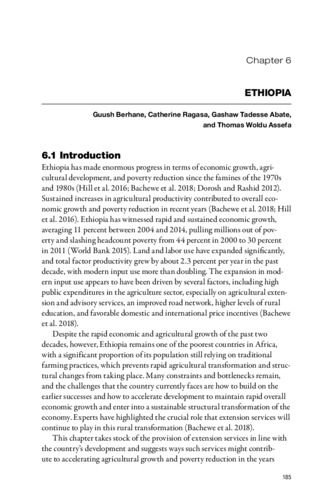
Book Chapter
Ethiopia [In Agricultural Extension]
2020Berhane, Guush; Ragasa, Catherine; Abate, Gashaw T.; Assefa, Thomas
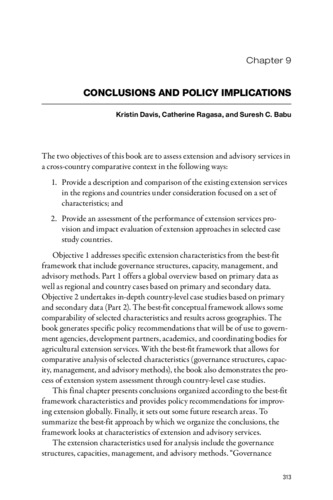
Book Chapter
Conclusions and policy implications [In Agricultural Extension]
2020Davis, Kristin E.; Babu, Suresh Chandra; Ragasa, Catherine
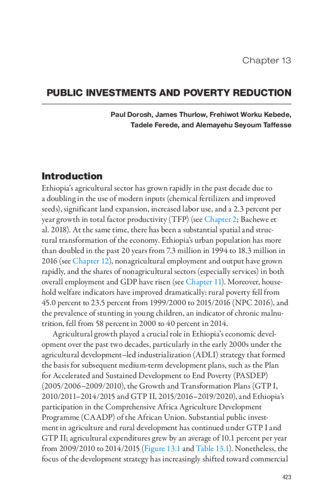
Book Chapter
Public investments and poverty reduction
2020Dorosh, Paul A.; Thurlow, James; Kebede, Frehiwot Worku; Ferede, Tadele; Taffesse, Alemayehu Seyoum
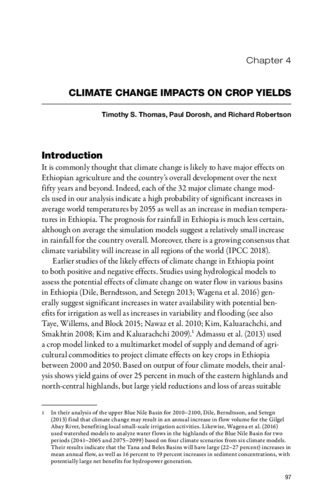
Book Chapter
Climate change impacts on crop yields [In Ethiopia's agrifood system: Past trends, present challenges, and future scenarios]
2020Thomas, Timothy S.; Dorosh, Paul A.; Robertson, Richard D.
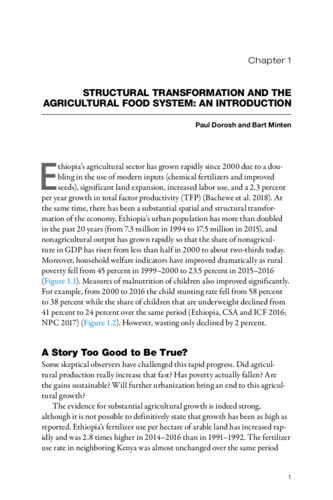
Book Chapter
Structural transformation and the agricultural food system: An introduction
2020Dorosh, Paul A.; Minten, Bart
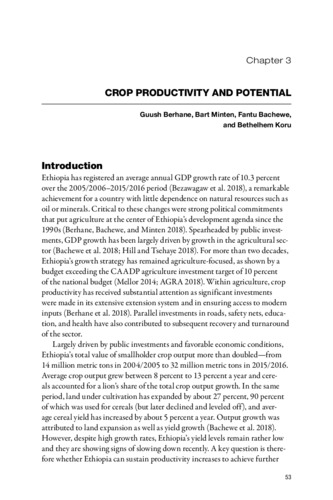
Book Chapter
Crop productivity and potential
2020Berhane, Guush; Minten, Bart; Bachewe, Fantu Nisrane; Koru, Bethlehem
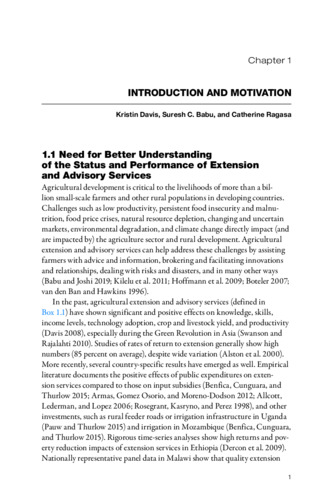
Book Chapter
Introduction and motivation
2020Davis, Kristin E.; Babu, Suresh Chandra; Ragasa, Catherine

Book
COVID-19 and global food security
2020Swinnen, Johan; McDermott, John
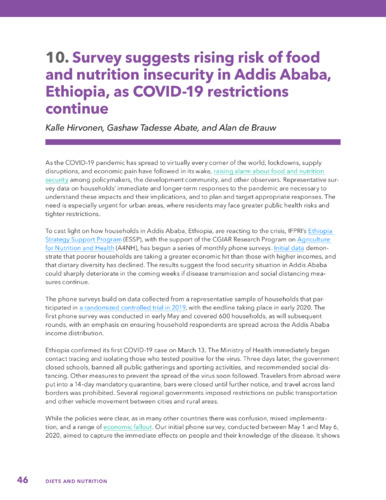
Book Chapter
Survey suggests rising risk of food and nutrition insecurity in Addis Ababa, Ethiopia, as COVID-19 restrictions continue
2020Hirvonen, Kalle; Abate, Gashaw T.; de Brauw, Alan
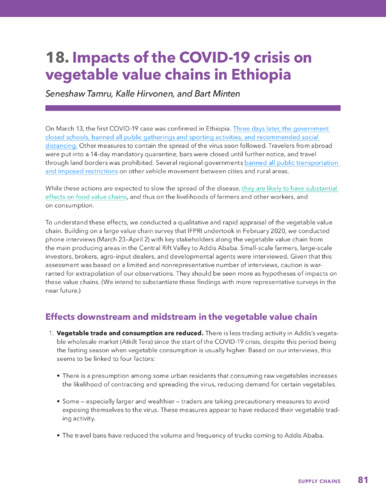
Book Chapter
Impacts of the COVID-19 crisis on vegetable value chains in Ethiopia
2020Tamru, Seneshaw; Hirvonen, Kalle; Minten, Bart; Taffesse, Alemayehu Seyoum; Anne Bossuyt
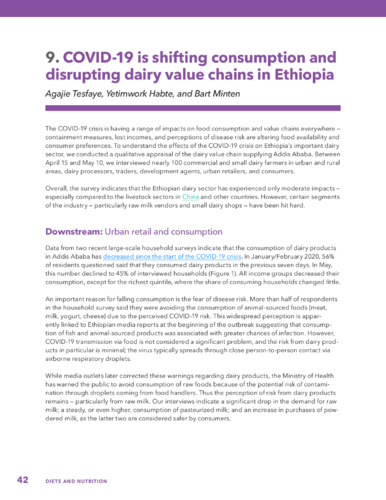
Book Chapter
COVID-19 is shifting consumption and disrupting dairy value chains in Ethiopia
2020Tesfaye, Agajie; Habte, Yetimwork; Minten, Bart
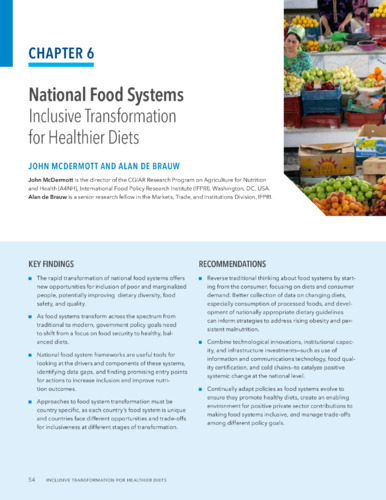
Book Chapter
National food systems: Inclusive transformation for healthier diets
2020McDermott, John; de Brauw, Alan
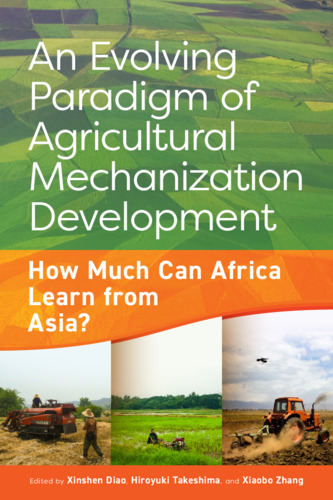
Book
An evolving paradigm of agricultural mechanization development: How much can Africa learn from Asia?
2020Diao, Xinshen; Takeshima, Hiroyuki; Zhang, Xiaobo
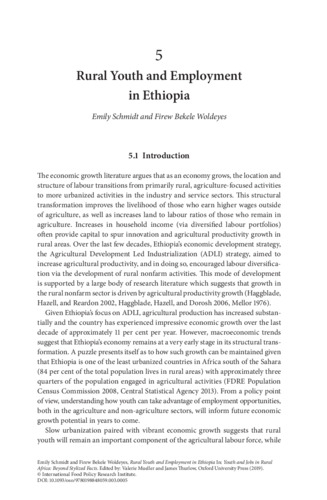
Book Chapter
Rural youth and employment in Ethiopia
2019Schmidt, Emily; Woldeyes, Firew Bekele
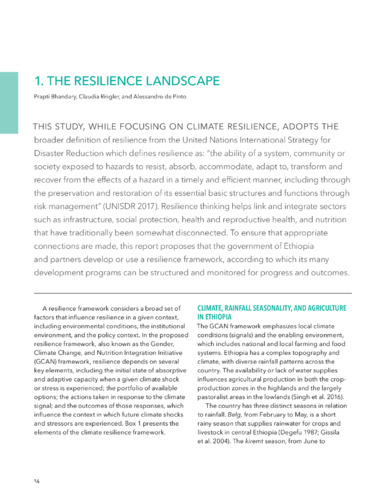
Book Chapter
The resilience landscape
2019Bhandary, Prapti; Ringler, Claudia; De Pinto, Alessandro
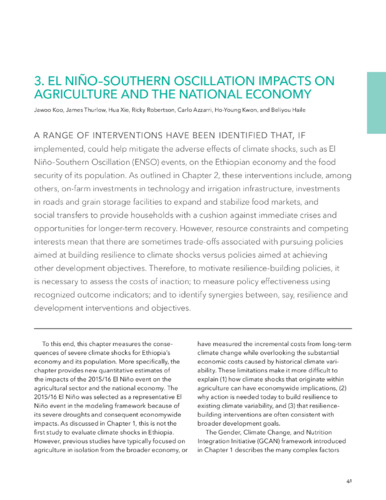
Book Chapter
El Niño-Southern oscillation impacts on agriculture and the national economy
2019Koo, Jawoo; Thurlow, James; Xie, Hua; Robertson, Richard D.; Azzarri, Carlo; Kwon, Ho Young; Haile, Beliyou
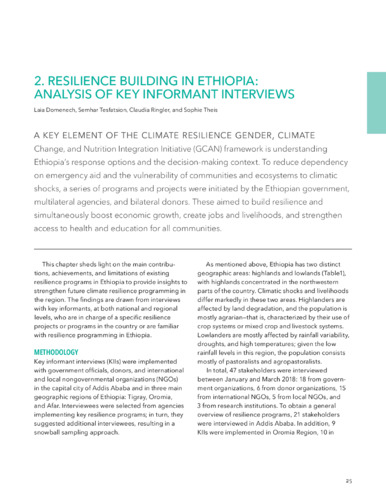
Book Chapter
Resilience building in Ethiopia: Analysis of key informant interviews
2019Domènech, Laia; Tesfatsion, Semhar; Ringler, Claudia; Theis, Sophie

Book Chapter
Moving toward nutrition-sensitive agriculture strategies and programming in Ethiopia
2019Bossuyt, Anne
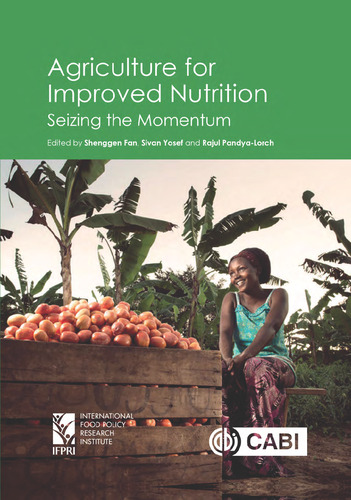
Book
Agriculture for improved nutrition: Seizing the momentum
2019Fan, Shenggen; Yosef, Sivan; Pandya-Lorch, Rajul

Book Chapter
Social protection in Ethiopia
2019Hoddinott, John F.; Taffesse, Alemayehu Seyoum

Book Chapter
The transformation of smallholder crop production in Ethiopia (1994-2016)
2019Taffesse, Alemayehu Seyoum

Book Chapter
Livestock production in Ethiopia
2019Bachewe, Fantu Nisrane; Tadesse, Fanaye

Book Chapter
Changes in child undernutrition in Ethiopia (2000-2016)
2019Golan, Jenna; Headey, Derek D.; Hirvonen, Kalle; Hoddinott, John F.

Book Chapter
Performance and institutions of the Ethiopian coffee sector
2019Schafer, Florian T.; Workako, Tadesse Kuma; Minten, Bart

Book Chapter
Agricultural markets in Ethiopia
2019Minten, Bart; Tamru, Seneshaw; Reardon, Thomas

Book Chapter
Rural finance and smallholder farming in Ethiopia
2019Berhane, Guush; Abay, Kibrom A.

Book Chapter
Agricultural impacts of the 2015/2016 drought in Ethiopia using high-resolution data fusion methodologies
2018Warner, James; Mann, Michael L.
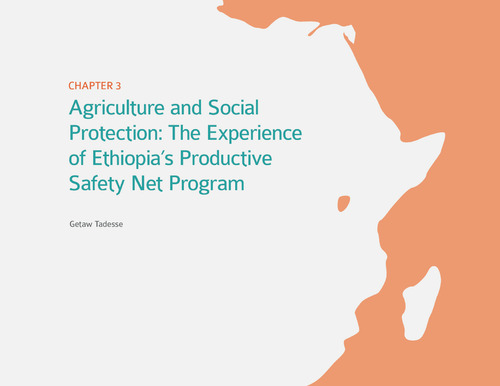
Book Chapter
Agriculture and social protection: The experience of Ethiopia’s Productive Safety Net Program
2018Tadesse, Getaw

Book Chapter
Appendix 1A: Agricultural transformation in Ethiopia: What do we know?
2018Berhane, Guush; Bachewe, Fantu Nisrane; Minten, Bart
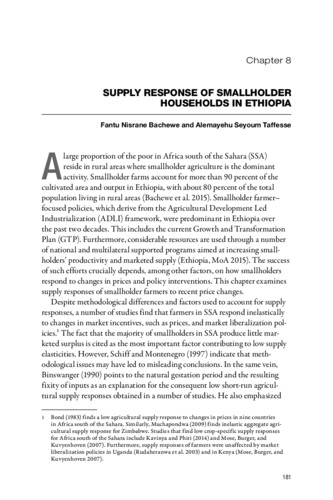
Book Chapter
Supply response of smallholder households in Ethiopia
2018Bachewe, Fantu Nisrane; Taffesse, Alemayehu Seyoum
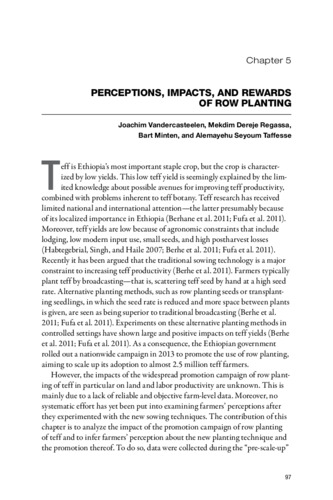
Book Chapter
Perceptions, impacts, and rewards of row planting
2018Vandercasteelen, Joachim; Regassa, Mekdim Dereje; Minten, Bart; Taffesse, Alemayehu Seyoum
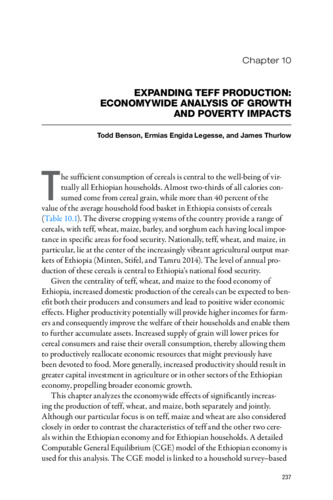
Book Chapter
Expanding teff production: Economywide analysis of growth and poverty impacts
2018Benson, Todd; Legesse, Ermias Engida; Thurlow, James
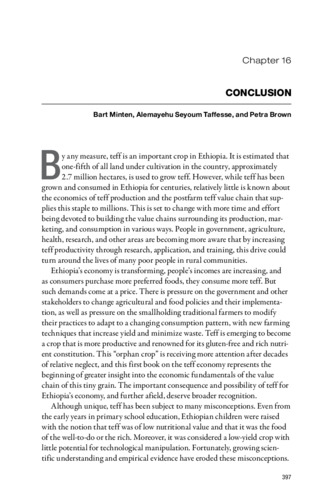
Book Chapter
Conclusion [In The Economics of Teff]
2018Minten, Bart; Taffesse, Alemayehu Seyoum; Brown, Petra
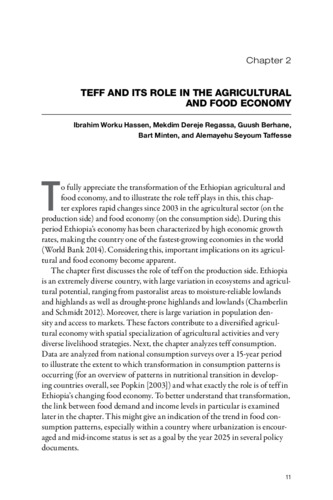
Book Chapter
Teff and its role in the agricultural and food economy
2018Hassen, Ibrahim Worku; Regassa, Mekdim Dereje; Berhane, Guush; Minten, Bart; Taffesse, Alemayehu Seyoum
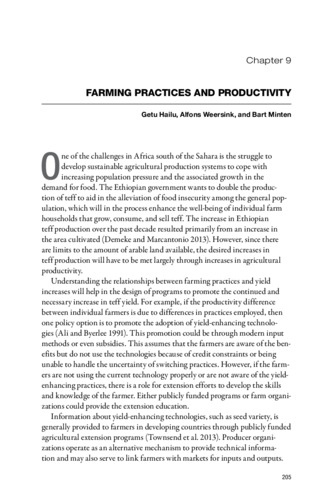
Book Chapter
Farming practices and productivity
2018Hailu, Getu; Weersink, Alfons; Minten, Bart
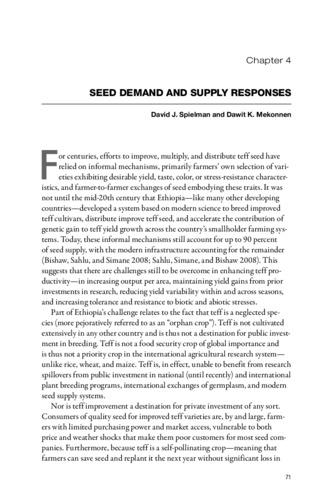
Book Chapter
Seed demand and supply responses
2018Spielman, David J.; Mekonnen, Dawit Kelemework
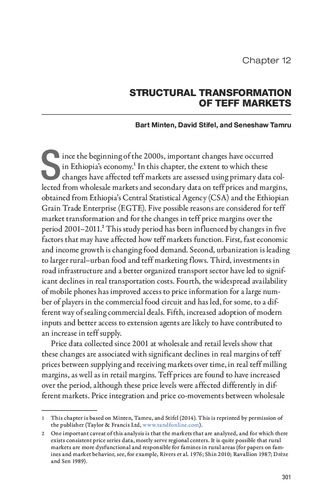
Book Chapter
Structural transformation of teff markets
2018Minten, Bart; Stifel, David; Tamru, Seneshaw
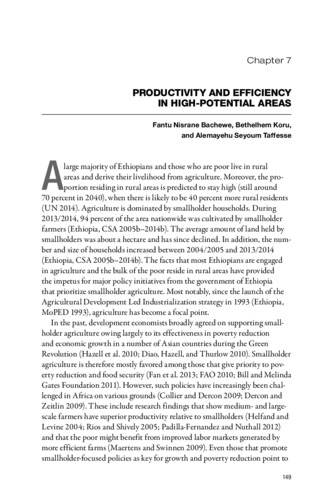
Book Chapter
Productivity and efficiency in high-potential areas
2018Bachewe, Fantu Nisrane; Koru, Bethlehem; Taffesse, Alemayehu Seyoum
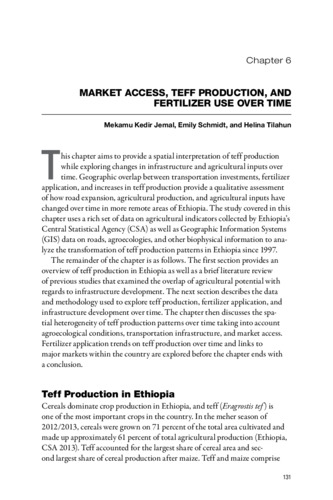
Book Chapter
Market access, teff production, and fertilizer use over time
2018Kedir Jemal, Mekamu; Schmidt, Emily; Tilahun, Helina
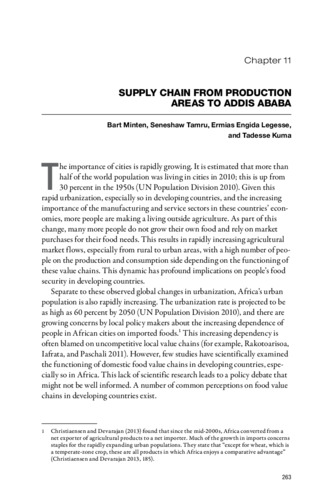
Book Chapter
Supply chain from production areas to Addis Ababa
2018Minten, Bart; Tamru, Seneshaw; Legesse, Ermias Engida; Kuma, Tadesse
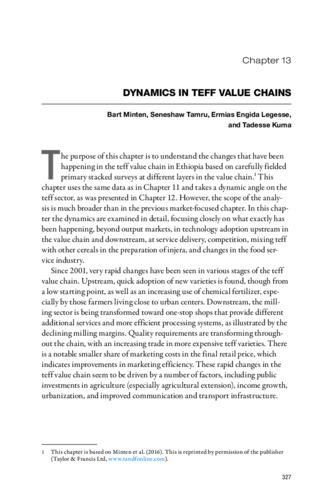
Book Chapter
Dynamics in teff value chains
2018Minten, Bart; Tamru, Seneshaw; Legesse, Ermias Engida; Kuma, Tadesse
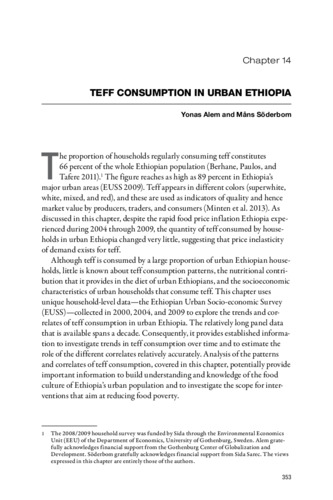
Book Chapter
Teff consumption in urban Ethiopia
2018Alem, Yonas; Söderbom, Mâns

Book Chapter
Nutrient composition and health benefits
2018Baye, Kaleab
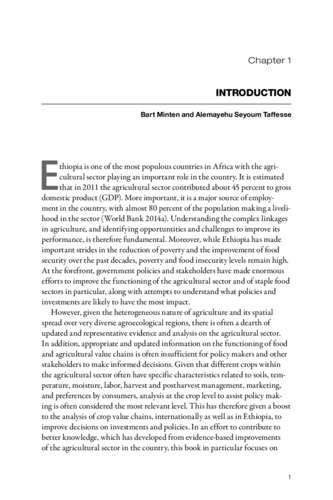
Book Chapter
Introduction [In The Economics of Teff]
2018Minten, Bart; Taffesse, Alemayehu Seyoum; Brown, Petra

Book Chapter
Agronomics of teff
2018Assefa, Kebebew; Chanyalew, Solomon
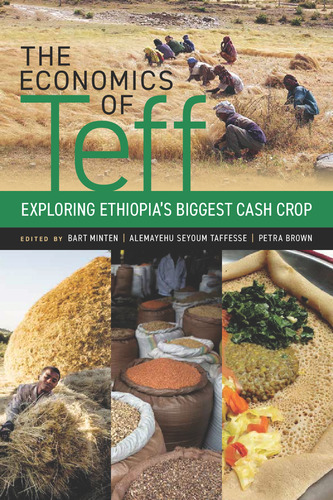
Book
The economics of teff: Exploring Ethiopia’s biggest cash crop
2018Minten, Bart; Taffesse, Alemayehu Seyoum; Brown, Petra

Book Chapter
Ethiopia - An agrarian economy in transition
2017Seid, Yared; Taffesse, Alemayehu Seyoum; Ali, Seid Nuru
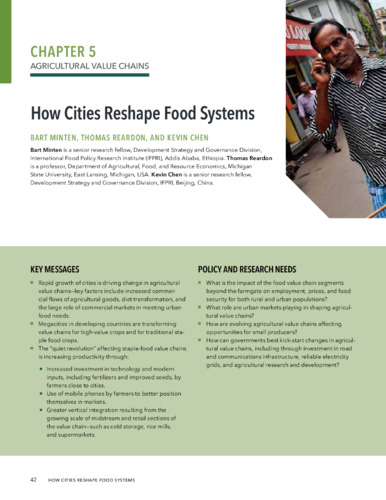
Book Chapter
Agricultural value chains: How cities reshape food systems
2017Minten, Bart; Reardon, Thomas; Chen, Kevin Z.

Book Chapter
Evaluating options: Assessing the relative merits of resilience interventions
2016Cervigni, Raffaello; Morris, Michael; Carfagna, Federica; Koo, Jawoo; Syroko, Joanna; Guo, Zhe; Xie, Hua; de Brouwer, Balthazaar; Verbeeten, Elke

Book Chapter
Agriculture, WASH, and safety nets: Ethiopia’s multisector story
2016Warren, Andrea

Book Chapter
Factors influencing the effectiveness of productivity-enhancing interventions: an assessment of selected programs
2016Karugia, Joseph T.; Massawe, Stella C.; Guthiga, Paul M.; Ogada, Maurice; Nwafor, Manson; Chilonda, Pius; Musaba, Emmanuel
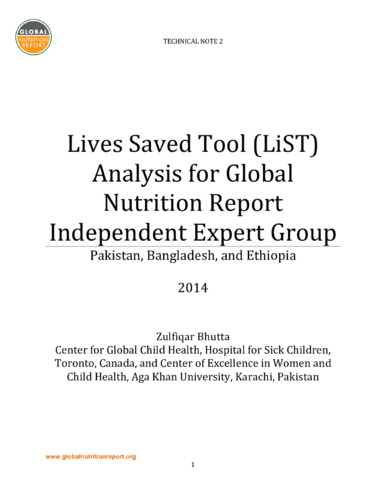
Book Chapter
Lives Saved Tool (LiST) analysis for global nutrition report Independent Expert Group: Pakistan, Bangladesh, and Ethiopia
2014Bhutta, Zulfiqar A.
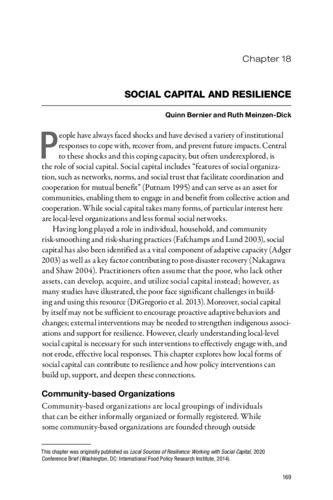
Book Chapter
Social capital and resilience
2014Bernier, Quinn; Meinzen-Dick, Ruth S.
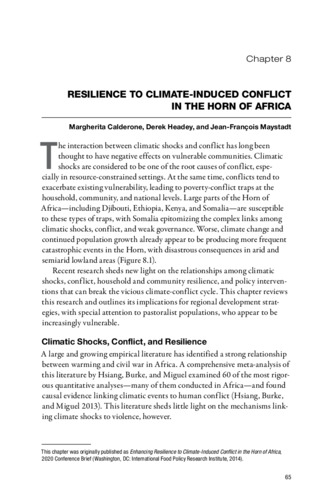
Book Chapter
Resilience to climate-induced conflict in the Horn of Africa
2014Headey, Derek D.; Maystadt, Jean-François; Calderone, Margherita Bernal
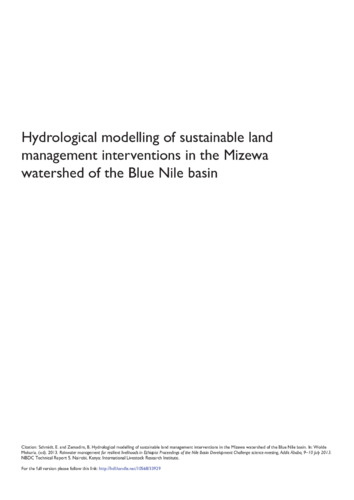
Book Chapter
Hydrological modelling of sustainable land management interventions in the Mizewa watershed of the Blue Nile basin
2013Schmidt, Emily; Zemadim, Birhanu

Book Chapter
Migration and resettlement in Ethiopia: Reflections on trends and implications for food security
2013Pankhurst, Alula; Rahmato, Dessalegn; Mueller, Valerie; Hailemariam, M.

Book Chapter
Implementing large scale food security programs in rural Ethiopia: Insights from the Productive Safety Net Program
2013Hoddinott, John F.; Sabates-Wheeler, Rachel; Berhane, Guush; Handino, Mulugeta; Kumar, Neha; Lind, Jeremy; Taffesse, Alemayehu Seyoum; Tefera, Mulugeta

Book Chapter
Welfare impacts of land certification in Tigray, Ethiopia
2013Holden, Stein; Hagos, Hosaena Ghebru

Book Chapter
Impact of land certification on tree growing on private plots of rural households: Evidence from Ethiopia
2013Mekonnen, Alemu; Hagos, Hosaena Ghebru; Holden, Stein; Kassie, Menale
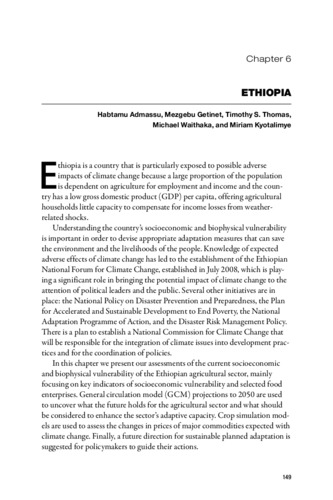
Book Chapter
Ethiopia [In East African agriculture and climate change: A comprehensive analysis]
2013Admassu, Habtamu; Getinet, Mezgebu; Thomas, Timothy S.; Waithaka, Michael; Kyotalimye, Miriam
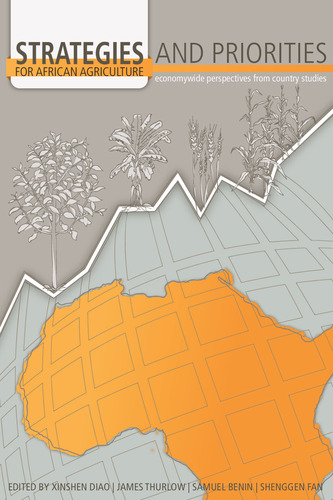
Book
Strategies and priorities for African agriculture: Economywide perspectives from country studies
2012Diao, Xinshen; Thurlow, James; Benin, Samuel; Fan, Shenggen

Book Chapter
Strategic grain reserves in Ethiopia: Institutional design and operational performance
2012Rashid, Shahidur; Lemma, Solomon

Book Chapter
Forage seed supply in Ethiopia: Some thoughts on status and how it might evolve
2012Duncan, Alan J.; Hanson, Jean; Spielman, David J.; Puskur, Ranjitha

Book Chapter
The bang for the birr: Public spending and rural welfare in Ethiopia
2012Mogues, Tewodaj
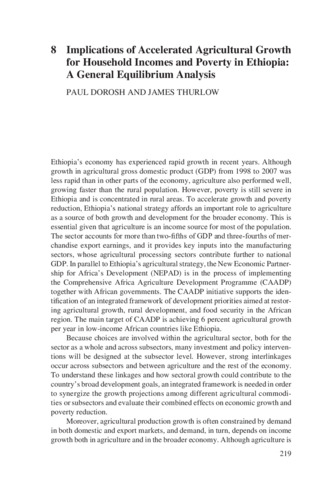
Book Chapter
Implication of accelerated agricultural growth for household incomes and poverty in Ethiopia: A general equilibrium analysis
2012Dorosh, Paul A.; Thurlow, James
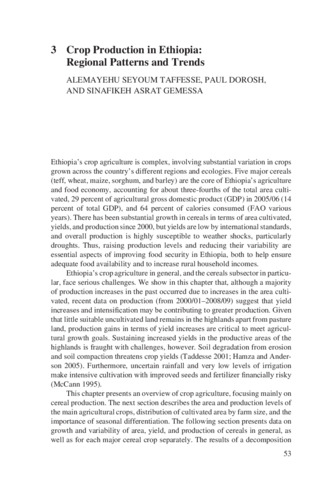
Book Chapter
Crop production in Ethiopia: Regional patterns and trends
2012Taffesse, Alemayehu Seyoum; Dorosh, Paul A.; Gemessa, Sinafikeh Asrat
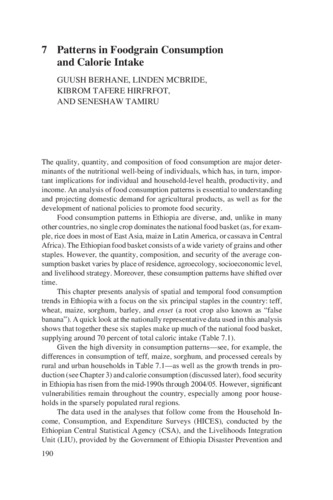
Book Chapter
Patterns in foodgrain consumption and calorie intake
2012Berhane, Guush; McBride, Linden; Hirfrfot, Kibrom Tafere; Tamru, Seneshaw
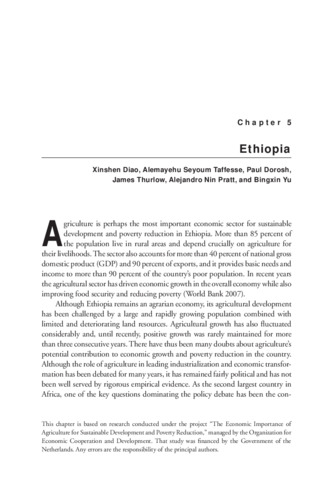
Book Chapter
Ethiopia [in Strategies and priorities for African agriculture]
2012Diao, Xinshen; Taffesse, Alemayehu Seyoum; Dorosh, Paul A.; Thurlow, James; Nin-Pratt, Alejandro; Yu, Bingxin
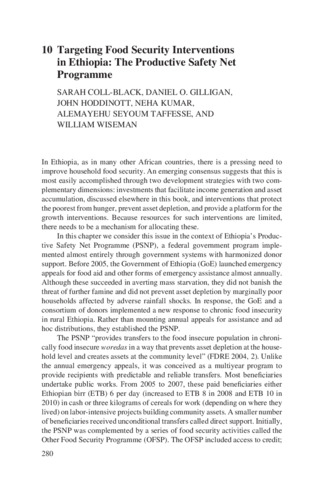
Book Chapter
Targeting food security interventions in Ethiopia: The productive safety net programme
2012Coll-Black, Sarah; Gilligan, Daniel O.; Hoddinott, John F.; Kumar, Neha; Taffesse, Alemayehu Seyoum; Wiseman, William
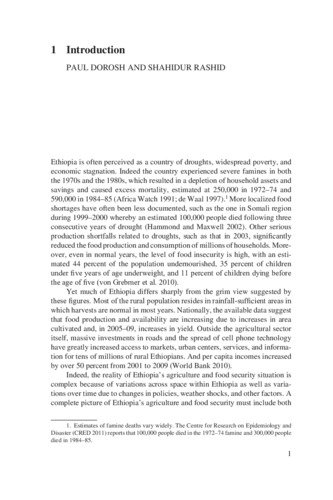
Book Chapter
Introduction [in Food and Agriculture in Ethiopia]
2012Dorosh, Paul A.; Rashid, Shahidur
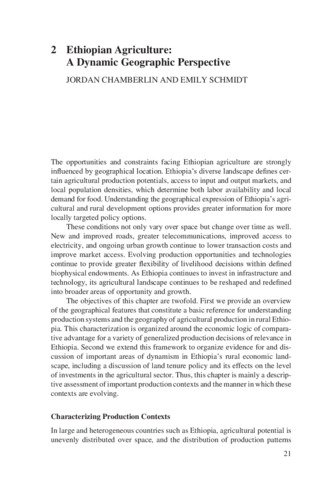
Book Chapter
Ethiopian Agriculture: A dynamic geographic perspective
2012Chamberlin, Jordan; Schmidt, Emily
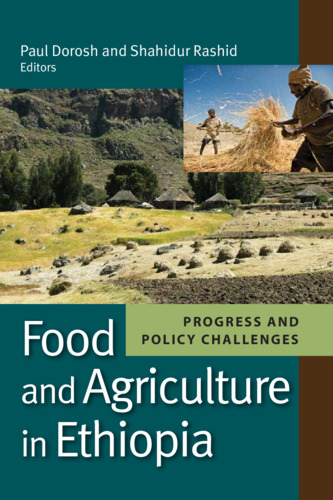
Book
Food and agriculture in Ethiopia: Progress and policy challenges
2012Dorosh, Paul A.; Rashid, Shahidur
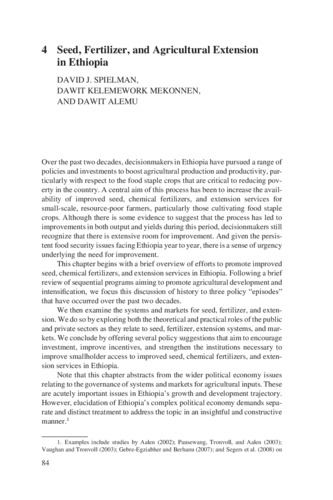
Book Chapter
Seed, fertilizer, and agricultural extension in Ethiopia
2012Spielman, David J.; Mekonnen, Dawit Kelemework; Alemu, Dawit
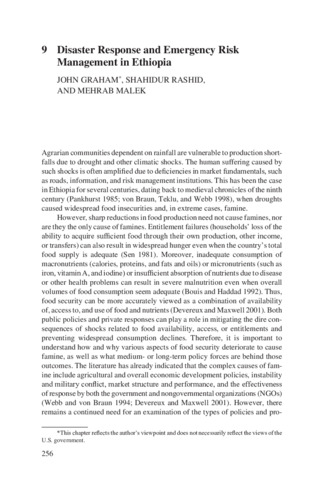
Book Chapter
Disaster response and emergency risk management in Ethiopia
2012Graham, John; Rashid, Shahidur; Malek, Mehrab
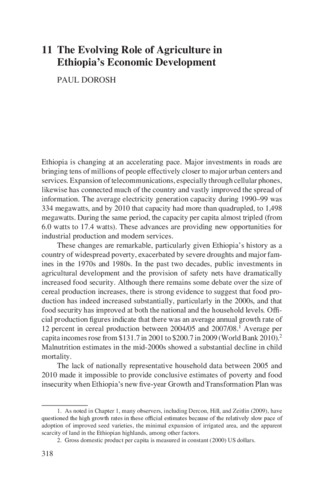
Book Chapter
The evolving role of agriculture in Ethiopia's economic development
2012Dorosh, Paul A.
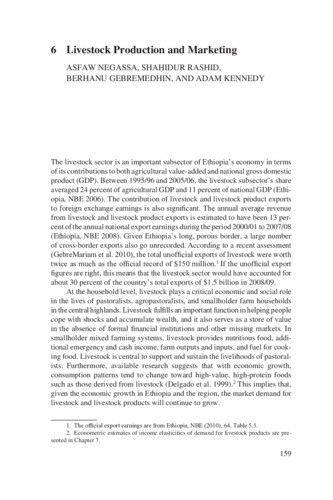
Book Chapter
Livestock production and marketing
2012Negassa, Asfaw; Rashid, Shahidur; Gebremedhin, Berhanu; Kennedy, Adam
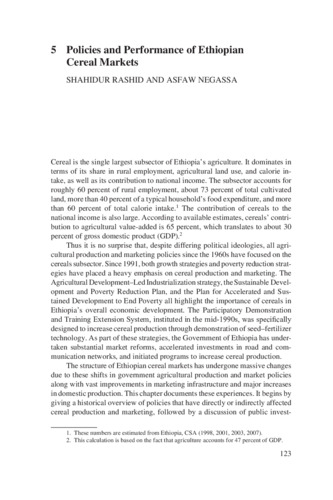
Book Chapter
Policies and performance of Ethiopian cereal markets
2012Rashid, Shahidur; Negassa, Asfaw

Book Chapter
Assessing household vulnerability to climate change: The case of farmers in the Nile Basin of Ethiopia
2011Deressa, Temesgen T.; Hassan, Rashid; Ringler, Claudia
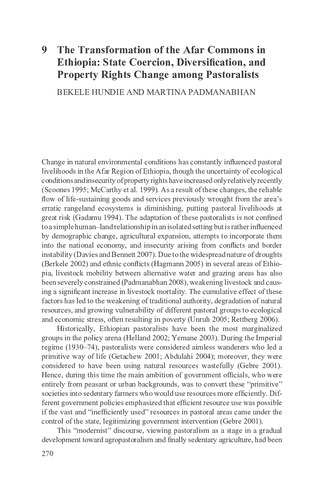
Book Chapter
The transformation of the Afar Commons in Ethiopia: State coercion, diversification, and property rights change among pastoralists
2011Hundie, Bekele; Padmanabhan, Martina
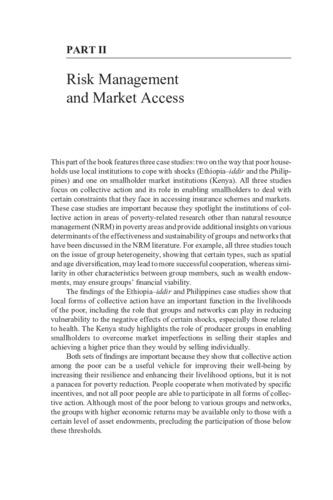
Book Chapter
Burial societies in rural Ethiopia
2011Dercon, Stefan; Hoddinott, John F.; Krishnan, Pramila; Woldehanna, Tassew